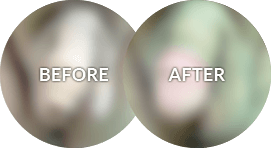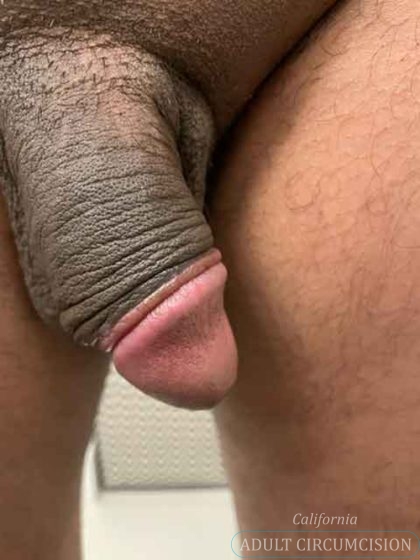A broken penis, or penile fracture, is a medical emergency that can happen when the erect penis is forcefully bent or twisted, resulting in a tear of the tunica albuginea. This tough fibrous sheath surrounds the erectile tissue and helps maintain the rigidity of the penis during an erection. A penile fracture can cause severe pain. And, left untreated, it can lead to erectile dysfunction, curvature of the penis, and other complications.
Penile fracture is not common. But when it does occur, it can be physically and emotionally traumatic. It is important that patients seek professional care immediately if they suspect they have suffered a broken penis. Therefore, finding a doctor experienced in the field is vital to achieve fast, effective healing.
At California Adult Circumcision, Dr. Mo Bidair is a highly trained and experienced urologist. He understands the sensitive nature of this injury and offers compassionate and discreet care to all patients. To schedule a urological consultation, call (619) 486-5005 or contact us via our online form.
Contents
- 1 Before and After Photos
- 2 About Penile Fracture
- 3 Assessing a Broken Penis
- 4 Personal Consultation
- 5 Fixing a Broken Penis
- 6 Recovery
- 7 Cost of Broken Penis Treatment in San Diego
- 8 FAQ
- 8.1 How can a person break their penis?
- 8.2 What are the symptoms of a broken penis?
- 8.3 How is a penile fracture diagnosed?
- 8.4 What is the treatment for a penile fracture?
- 8.5 How long does it take for a broken penis to heal?
- 8.6 Can a penile fracture be prevented?
- 8.7 Do I need to see a specialist for a penile fracture?
- 9 References
Before and After Photos
About Penile Fracture
Penile fractures can be a traumatic and painful experience for any man. They most commonly occur in men between 30 and 50 years of age, (1) and primarily involve two related areas of the penis. The corpora cavernosa are the two chambers that run along the length of the penis, and are responsible for holding blood during erections. The tunica albuginea, a fibrous layer surrounding the corpora cavernosa, keeps the penis rigid during intercourse. When either of these structures is damaged due to trauma or injury, it can result in a penile fracture.
How Can a Person Break Their Penis?
Penile fractures are typically caused by sudden blunt force to the erect penis during sexual activity. It can also occur during masturbation, or even from falling or rolling onto a hard surface with an erect penis. According to one study, just over 57.2% of penile trauma patients reported direct trauma during intercourse, although these numbers vary according to country. In the United States, the majority of penile fractures occur as a result of intercourse. (1)(2)
Symptoms
Symptoms of a penile fracture include: (2)
- Immediate pain
- Immediate loss of erection
- Swelling
- Bruising
- A popping sound at the time of injury
How Rare is a Broken Penis?
In the United States, penis fracture injuries affect 1 out of 175,000 men. (3) Although there is a slim possibility this injury may occur, it is important to remember that penile fractures are not a regular occurrence. However, knowing what to look out for if you injure your penis will help you to determine the best course of action.
Assessing a Broken Penis
A full assessment should be performed in suspected cases of penile fracture. Doctors may note the following: (2)
- “Eggplant-like” Appearance
- Swelling
- Discoloration
- Corporeal Tear
In some cases there may be:
- Scrotal Swelling
- Perineal Swelling
- Suprapubic Swelling
- Painful Urination
- Urinary Retention
- Blood in the Urine (Hematuria)
Retrograde Urethrography
Gross hematuria is the term used to describe the visibility of blood in the urine with the naked eye. If this is present after a penile fracture, retrograde urethrography may be necessary. (2) A retrograde urethrogram allows the urethra to be x-rayed by using a special dye. This is then studied by the doctor to determine if any damage has occurred to the urethral structure itself during the injury.
Dr. Bidair’s approach to penile fracture surgery is tailored to each patient’s individual needs to provide optimal results. To schedule a consultation at his La Mesa office, fill out an inquiry form here.
Personal Consultation
If you have experienced penile trauma, such as a penile fracture, it is important to seek immediate medical attention from a urology specialist. At California Adult Circumcision, Dr. Bidair offers personalized consultations to assess the extent of the injury and determine the best course of treatment.
During your consultation, Dr. Bidair will review your medical history and conduct a physical examination to evaluate the severity of the penile fracture. Depending on the extent of the injury, surgical intervention may be necessary to repair the damaged tissue and prevent long-term complications.
Dr. Bidair understands that penile trauma can be a sensitive and embarrassing issue for many patients. He provides a compassionate and discreet environment to ensure that patients feel comfortable discussing their concerns and receiving the care they need.
If you are experiencing symptoms of a penile fracture, such as pain, swelling, or difficulty achieving an erection, don’t hesitate to contact California Adult Circumcision at (619) 486-5005 to schedule a consultation with Dr. Bidair. Our office is located in La Mesa, California, but we also offer phone consultations for your convenience.
Fixing a Broken Penis
Fortunately, penile fractures can be treated. Medical reporting indicates that the sooner this happens, the better. In fact, in 90% of cases, immediate surgical repair results in excellent outcomes. (4)
What Does Surgery Involve?
During surgery, the damaged tunica albuginea is repaired, and any blood clots or hematoma (bad bruising) are drained. In some cases, circumcision will be the most effective way to access the area. (1) In severe cases where the corpora cavernosa has been extensively damaged, a penile prosthesis may be necessary to restore function. After surgery, patients will need to abstain from sexual activity for several weeks while healing.
Find out more about adult circumcision on our website.
Recovery
We give all of our patients specific instructions regarding their post-operative wound care. Pain medication may be prescribed to manage discomfort, and ice packs can help to reduce swelling. After surgery, patients should refrain from sexual activity for six to eight weeks to allow for proper healing. It is important to follow all post-operative instructions provided by Dr. Bidair to ensure a successful recovery.
If you suspect you have a penile fracture or another type of penile trauma, don’t hesitate to contact California Adult Circumcision right away. Dr. Bidair and his team are dedicated to providing compassionate, expert care for all of your urological needs.
Cost of Broken Penis Treatment in San Diego
The cost of a penile fracture repair surgery varies depending on various factors. Seek immediate medical attention in case of a penile fracture. It is important to prioritize your health and not delay your care. Our team will work with you to determine the best course of action for your unique situation. Contact us at (619) 486-5005 to schedule a consultation with Dr. Bidair and discuss the cost of your penile fracture repair surgery.
To find out more about circumcision and other urological procedures, read Dr. Bidair’s blog.
FAQ
How can a person break their penis?
A penile fracture occurs when the tunica albuginea, which is the tough fibrous covering of the erectile tissue in the penis, ruptures. This usually happens during sexual activity or masturbation and can result in pain, swelling, bruising, and a popping sound.
What are the symptoms of a broken penis?
The symptoms of a penile fracture include severe pain, immediate loss of an erection, swelling, bruising, deformity, and difficulty urinating. If you experience these symptoms, seek medical attention immediately.
How is a penile fracture diagnosed?
A penile fracture is usually diagnosed based on the patient’s history and physical examination. An ultrasound may also be ordered to confirm the diagnosis.
What is the treatment for a penile fracture?
Treatment for a penile fracture typically involves surgery to repair the ruptured tissue. The procedure is performed under general anesthesia and involves making a small incision in the penis to access the area. The tissue is then repaired with sutures, and a catheter is inserted to drain urine from the bladder.
How long does it take for a broken penis to heal?
Recovery from a penile fracture surgery usually takes about 4-6 weeks. During this time, patients are advised to avoid sexual activity and any strenuous physical activity that could put stress on the penis. Pain medication and antibiotics may be prescribed to manage pain and prevent infection.
Can a penile fracture be prevented?
Penile fractures can sometimes be prevented by using caution during sexual activity and avoiding positions that put excessive pressure on the penis. It’s also important to maintain good sexual health and seek prompt medical attention for any symptoms of infection or injury.
Do I need to see a specialist for a penile fracture?
Yes, it is recommended that you see a specialist for a penile fracture. It is best to seek a highly skilled and experienced urologist who specializes in the diagnosis and treatment of penile fractures. An expert in the field can provide the necessary care and guidance throughout your recovery process.
References
- Diaz KC, Cronovich H. Penis Fracture. PubMed. Published 2022. https://www.ncbi.nlm.nih.gov/books/NBK551618/
- Jack GS, Garraway I, Reznichek R, Rajfer J. Current Treatment Options for Penile Fractures. Reviews in Urology. 2004;6(3):114-120. https://www.ncbi.nlm.nih.gov/pmc/articles/PMC1472832/
- Mirzazadeh M, Fallahkarkan M, Hosseini J. Penile fracture epidemiology, diagnosis and management in Iran: a narrative review. Translational Andrology and Urology. 2017;6(2):158-166. doi:https://doi.org/10.21037/tau.2016.12.03
- Kim JH, Park JY, Song YS. Traumatic Penile Injury: From Circumcision Injury to Penile Amputation. BioMed Research International. 2014;2014:1-6. doi:https://doi.org/10.1155/2014/375285











